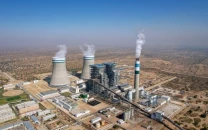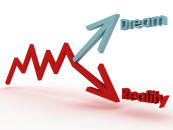Purchasing for the future: Time to import capital goods is now
Lower oil prices present golden opportunity to invest in future

Lower oil prices present golden opportunity to invest in future. PHOTO: FILE
The fall in oil prices has resulted in a lower expenditure on fuel and lubricants, the CPEC involves several transportation, industrial and energy projects while lower discount rates induces private sector borrowing.
Each of these has its own individual benefits to our economy.
However, we need to look at the past when such indicators did exist and the economy achieved higher GDP growth rates. The era we may consider is the period between 2000 and 2006. It was during the latter half of the period when Pakistan experienced its highest growth rate of GDP per capita in the last 15 years.
Today, falling crude oil prices means lower import bills. However, instead of focusing on lower oil prices as a driving factor for economic growth, there is rather a need to redistribute the share of capital goods and the share of fuel and lubricants in our imports such that the former is favoured over the latter.
Manufacturing disadvantage
Pakistani manufacturers own relatively older and inefficient machineries on average as compared to the manufacturers in other South Asian and East Asian economies.

There is no doubt that the import of capital goods benefits industrial activities in Pakistan and it is likely that this will play a crucial role to jumpstart the next phase of higher economic growth.
The last time there was a declining trend in the share of imports of fuel and lubricants was in the early 2000s. This trend continued till 2005. However, there was an increase in the share of imports of capital goods into Pakistan from 2000 to 2005. The imports of capital goods increased from $3 billion in 2000 to $11 billion in 2005, which suggests that there was a concerted effort to improve the quality of machineries and equipment in Pakistan.
Unfortunately, 2006 onwards, there was an increase in the share of imports of fuel and lubricants and a decrease in the share of imports of capital goods. In 2014, twice as much of fuel and lubricants were imported into Pakistan than capital goods.
Between 2003 and 2008, Pakistan experienced its highest growth rate in private sector borrowing, which averaged more than 20%. In addition, the large-scale manufacturing index averaged a year-on-year increase of more than 10% during this period.
Increasing capital goods
Import of capital goods should be positively correlated to greater industrial activity as well as private sector borrowing.
If Pakistan is to achieve its target of higher economic growth, it is important to revitalise the private sector. At the minimum, the government needs to ensure availability of funds to the private sector by enhancing its programmes such as the long-term finance scheme and technology up gradation funds.
We need to be aware that the increase in the imports of capital goods will involve a certain time lag between the period when investments are incurred and benefits are accrued.
Therefore, investments in capital goods today may benefit the economy after three years when the projects undertaken in CPEC are completed. The rise in the import of capital goods in 2000 may have resulted in higher industrial activities between 2003 and 2005.
As global oil prices fall and the discount rate are at its lowest level, it is important that the government adopts strong industrial policies. We should not be delighted with the reduction in the level of imports when it is necessary to redistribute the imports in favour of goods that promote economic growth.
The writer is an Assistant Professor of Economics & Research Fellow at CBER, IBA
Published in The Express Tribune, January 25th, 2016.
Like Business on Facebook, follow @TribuneBiz on Twitter to stay informed and join in the conversation.



















COMMENTS
Comments are moderated and generally will be posted if they are on-topic and not abusive.
For more information, please see our Comments FAQ